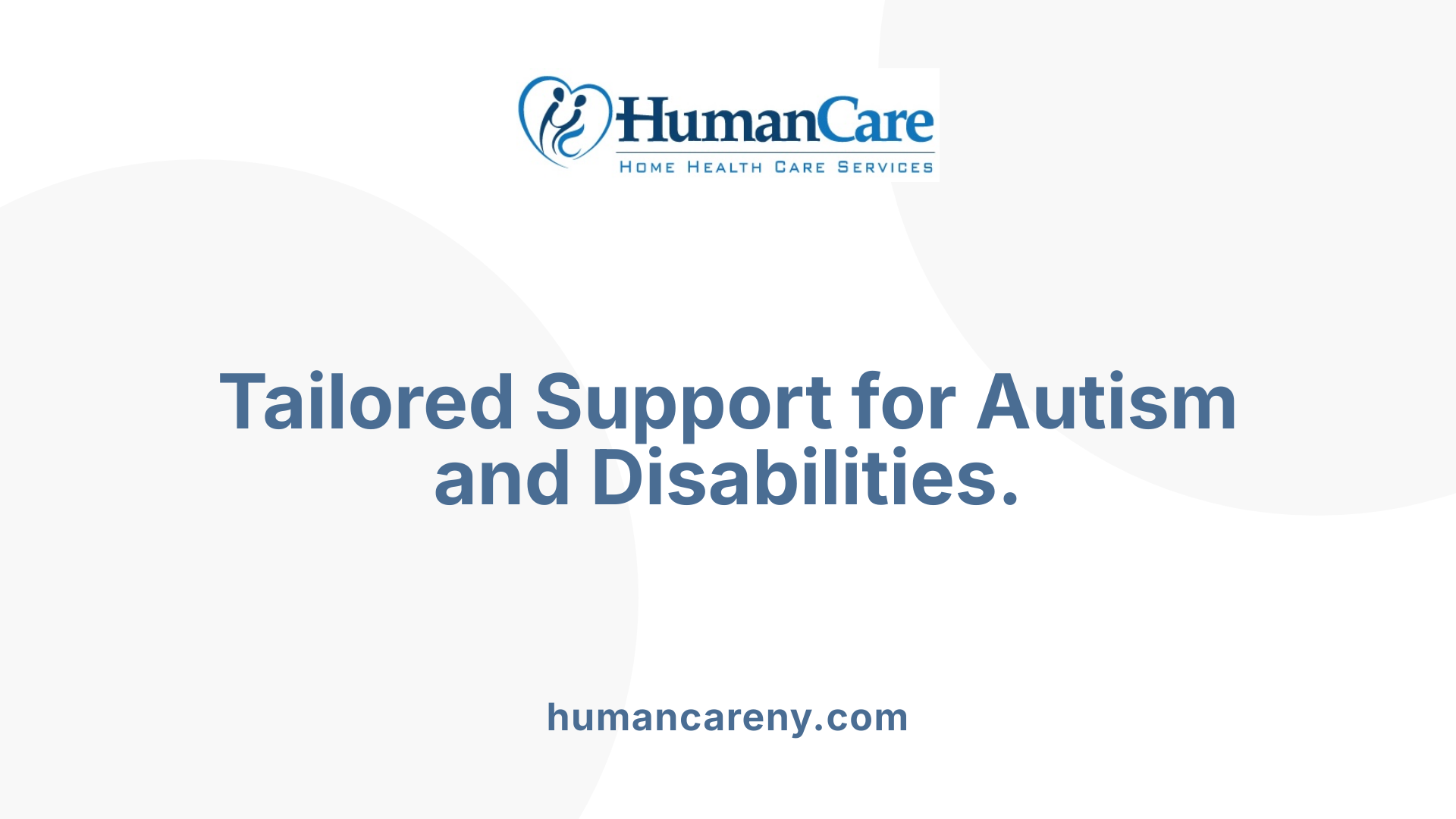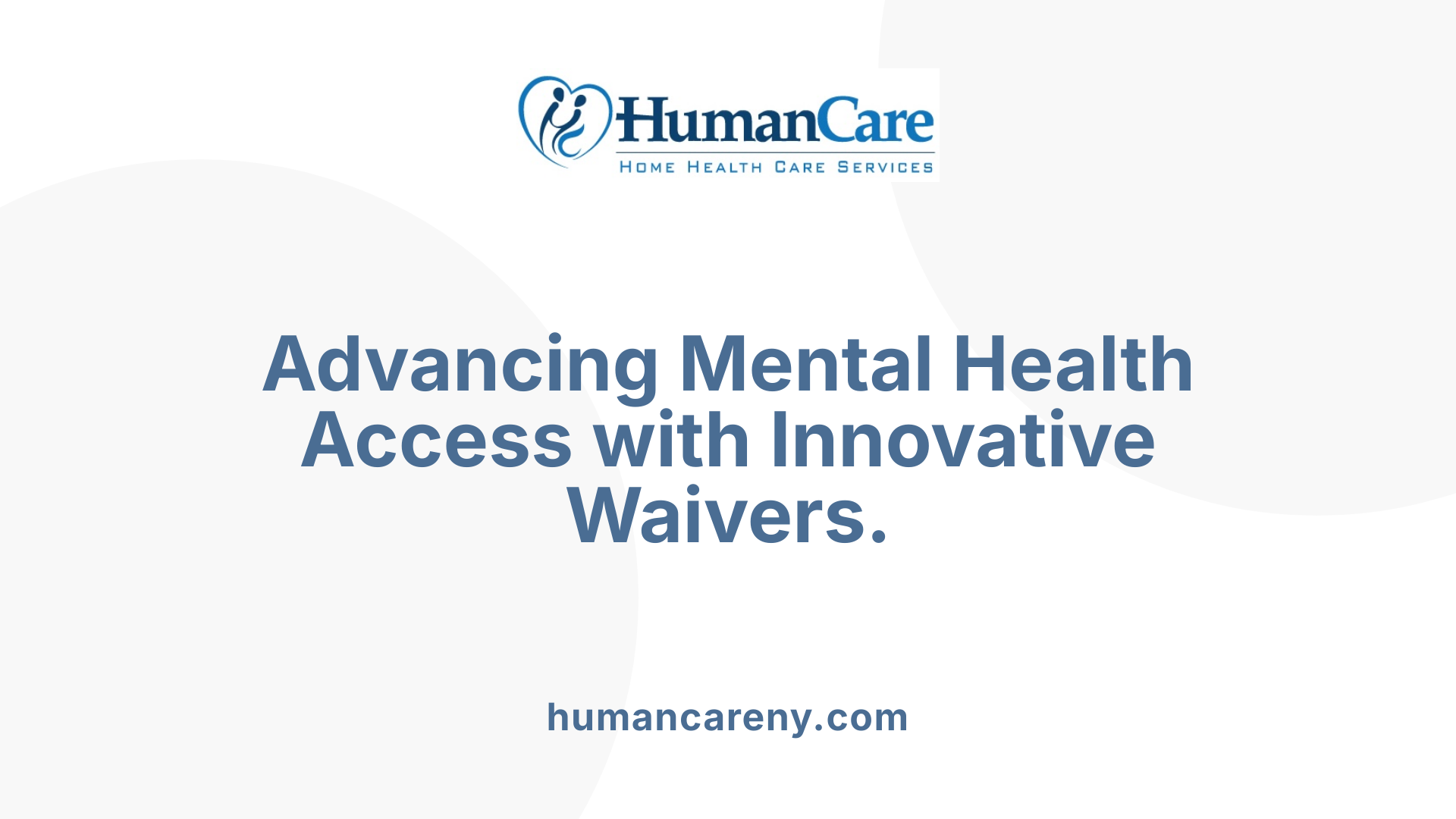How Medicaid waiver programs improve access to therapy
Expanding Horizons: The Role of Medicaid Waivers in Enhancing Therapy Access

Understanding Medicaid Waivers and Their Impact on Behavioral Health Services
Medicaid is the primary source of treatment for mental health and substance use disorders in the United States. Through various waiver programs, Medicaid has developed innovative strategies to improve access to therapy, especially for vulnerable populations. This article explores how Medicaid waivers function, their benefits, challenges, and the vital role they play in creating equitable, community-based mental health services across the nation.
Strategies Used by Medicaid Waivers to Increase Treatment Availability

What are the main strategies used by Medicaid waivers to increase treatment availability?
Medicaid waivers are vital tools that help states improve access to behavioral health services and other healthcare needs. A primary approach is the implementation of innovative policies through section 1115 waivers. These waivers allow states to test new ways of delivering and paying for care outside federal rules, opening opportunities to expand coverage and enhance service delivery.
One common strategy is coverage expansion targeting specific populations, such as individuals with substance use disorders, seniors, or people with developmental disabilities. By broadening eligibility and including services like mental health, substance abuse treatment, and case management, states can better meet unmet needs.
Restructuring financing and payment models is another key tactic. States often adopt alternative payment approaches, such as managed care programs or performance-based reimbursements, to incentivize providers. This encourages high-quality care and expands access for high-need groups.
Community-based services form the backbone of these strategies. Waivers facilitate the development of health homes, peer support programs, and mobile clinics that provide care in familiar settings, making treatment more accessible. These approaches also address social determinants of health, like housing and transportation, which significantly impact treatment adherence and health outcomes.
Furthermore, waivers support the creation of specialized programs focusing on behavioral health, including prenatal mental health, crisis response, and integrated behavioral health services. By developing these targeted interventions, states can reduce barriers and improve treatment availability.
Overall, Medicaid waivers are instrumental in tailoring programs to meet diverse needs, fostering innovative solutions that extend treatment options and reach underserved populations effectively.
| Strategy | Description | Example Benefits |
|---|---|---|
| Innovative policy implementation | Flexible policies outside federal rules | Expanded coverage and new service models |
| Coverage expansion for targeted populations | Focused eligibility widening | Increased access for vulnerable groups |
| Restructuring financing | Alternative payment models and managed care systems | Improved provider incentives, cost control |
| Development of community services | Local, accessible care programs | Reduced barriers through mobile clinics, peer support |
| Addressing social determinants | Linking social needs like housing, transportation | Better treatment adherence, holistic recovery outcomes |
Leveraging these strategies, Medicaid waivers help provide broader, more accessible treatment options that are responsive to the needs of different populations, ultimately aiming to improve health outcomes across communities.
How Medicaid Waiver Programs Enhance Access to Therapy and Behavioral Health Services
Medicaid waiver programs are instrumental in expanding access to therapy and behavioral health services across the United States. These programs, particularly under provisions like Section 1915(c) and Section 1115, allow states to go beyond the standard Medicaid benefits and introduce innovative care models tailored to their populations' needs.
One significant way waivers improve access is by broadening the scope of benefits. While traditional Medicaid may not cover all types of mental health and substance use treatments, waivers enable states to include community-based services, intensive outpatient programs, and supports specifically designed for individuals with disabilities or mental health conditions.
In addition, these programs promote flexible funding, allowing states to allocate resources efficiently towards interventions like crisis stabilization, peer support, and in-home care. Managed care organizations are often involved to coordinate and deliver these services, helping to reduce gaps caused by provider shortages or transportation barriers.
Implementation of innovative care models is another hallmark of waiver use. For example, some states have integrated mobile crisis teams and telehealth platforms to deliver urgent behavioral health support, especially in rural or underserved areas. These approaches not only improve timely access but also enhance the quality of care.
Community-based interventions are prioritized through waivers by funding services that enable individuals to live in their homes and communities rather than in institutional settings. This approach addresses social determinants of health—like housing and transportation—further reducing barriers to treatment.
Although Medicaid waivers offer significant advantages, successful implementation depends on adequate policy design, state capacity, and federal support. Ongoing evaluation and adaptation are necessary to maximize their impact in providing equitable access to critical behavioral health services.
| Benefit Expansion | Care Model Innovation | Key Barriers Addressed |
|---|---|---|
| Community services | Telehealth and mobile crisis teams | Transportation issues |
| Specialized disability services | Managed care coordination | Provider shortages |
| Crisis intervention | In-home supports | Fragmented healthcare systems |
| Tailored mental health supports | Peer support networks | Social support gaps |
Expanding Therapy Access for Populations with Autism and Disabilities
 Medicaid waiver programs play a vital role in broadening access to therapy and support services for people with autism and disabilities. These programs are designed to provide customized, community-based services that are centered around the individual and their family. They offer a wide array of therapies, including habilitation and skill-building, as well as respite care to support families.
Medicaid waiver programs play a vital role in broadening access to therapy and support services for people with autism and disabilities. These programs are designed to provide customized, community-based services that are centered around the individual and their family. They offer a wide array of therapies, including habilitation and skill-building, as well as respite care to support families.
One of the primary benefits of these waivers is their focus on keeping individuals in familiar settings, such as their homes and communities. This approach helps promote independence and enhances quality of life, while also reducing the need for long-term institutional care.
Care coordination is a cornerstone of Medicaid waivers. They often incorporate telehealth options and assistive technologies, which improve access to services, especially in remote or underserved areas. These tools and services address diverse needs, from communication aids to mobility devices, ensuring comprehensive support.
Furthermore, waiver programs help overcome many barriers to access, such as geographical limitations and financial constraints. They enable families to receive personalized support that aligns with their specific circumstances, reducing reliance on emergency or inpatient services.
In summary, Medicaid waivers for autism and disability services facilitate tailored, community-based therapies and support that promote autonomy, community participation, and well-being. They also provide crucial assistance to families and caregivers, helping build sustainable, person-centered care systems.
Impact of Medicaid Waiver Programs on Mental Health and Substance Use Disorder Treatment Access
 Medicaid waiver programs play a vital role in shaping access to mental health and substance use disorder (SUD) treatments across the United States.
Medicaid waiver programs play a vital role in shaping access to mental health and substance use disorder (SUD) treatments across the United States.
One of their main contributions is the expansion of community-based and residential services. These programs allow states to tailor services for specific populations, including individuals with complex conditions like co-occurring mental health and substance use issues. By providing support such as case management, home health aides, and habilitation, waivers enable many to live in community settings rather than institutional care.
Policy initiatives and coverage changes heavily influence how effective these programs are. For example, waivers often facilitate the inclusion of services not traditionally covered under Medicaid, such as employment supports and assistive technology. Federal legislation, such as the 2018 SUPPORT Act and the American Rescue Plan Act (ARPA), have dedicated funds and policies to expand behavioral health services, including mobile crisis intervention and telehealth.
However, challenges from administrative barriers can hinder their impact. Recent policy shifts—like implementing work requirements, expanding IMD (Institutions for Mental Disease) waivers, and adding restrictions—may decrease enrollment. These barriers can particularly affect vulnerable groups who struggle navigating complex benefits, risking a decline in outpatient and inpatient service use.
Federal funding and legislative efforts also shape the landscape. With Medicaid being the largest payer for behavioral health care—covering approximately 58% of expenditures—reductions in coverage can lead to significant treatment gaps. States using 1115 and 1915(c) waivers have demonstrated success in expanding access, but long waits for services and capacity limitations remain hurdles.
The rise of telehealth and integrated, holistic care models is another positive development. Nearly all states now cover telehealth services for mental health, greatly improving access during the COVID-19 pandemic and beyond. Programs that co-locate behavioral and physical health services aim to deliver comprehensive, person-centered care that reduces fragmentation.
In summary, Medicaid waiver programs substantially influence treatment availability. When well-designed and properly funded, they expand access to crucial services, including community-based supports, integrated care, and innovative delivery methods. Conversely, administrative and policy barriers can undermine these benefits, underscoring the importance of ongoing policy evaluation and adaptation to meet the needs of vulnerable populations in mental health and SUD care.
Creating Community-Based Services and Reducing Healthcare Disparities
 Medicaid waivers, particularly Section 1115 demonstrations and Home and Community-Based Services (HCBS) waivers, are essential in expanding community-centered healthcare options. These waivers allow states to tailor their Medicaid programs to meet the specific needs of underserved populations, including those facing significant social and economic barriers.
Medicaid waivers, particularly Section 1115 demonstrations and Home and Community-Based Services (HCBS) waivers, are essential in expanding community-centered healthcare options. These waivers allow states to tailor their Medicaid programs to meet the specific needs of underserved populations, including those facing significant social and economic barriers.
A primary way waivers promote equity is by integrating services that address social determinants of health, such as housing, transportation, and employment support. For example, North Carolina's waiver pilot includes funding for services targeting housing and food insecurity, recognizing how these factors influence overall health.
By broadening access to culturally competent care and expanding behavioral health and social supports, waivers help reduce disparities experienced by racial and ethnic minorities and other marginalized groups. They enable the delivery of services outside traditional clinical settings, fostering community engagement and personalized care.
States also use waivers to increase eligibility, reduce administrative barriers, and include innovative approaches like telehealth, mobile crisis units, and family support programs. These efforts make essential health services more accessible, especially during crises such as COVID-19.
Federal initiatives further support health equity through enhanced data collection and targeted programs designed to close gaps in care. Overall, Medicaid waivers serve as powerful tools to reshape healthcare systems into more equitable, community-focused environments that directly combat disparities.
| Waiver Type | Purpose | Impact on Disparities | Example Program |
|---|---|---|---|
| HCBS Waivers | Expand community-based supports | Improve access for individuals with disabilities and seniors | Customized services for long-term care |
| 1115 Demonstrations | Pilot innovative service models | Address social determinants and health equity | Planning for Healthy Babies in Georgia |
| 1915(c) waivers | Support home and community living | Reduce institutional care reliance | Support for persons with intellectual disabilities |
Understanding how these waivers operate and their impact highlights their critical role in advancing equitable healthcare delivery.
Historical Context and Evolution of Medicaid Waivers
Medicaid waivers are specialized tools that allow states to innovate beyond standard Medicaid rules, creating tailored community-based services that address social and health disparities. These waivers, including 1115 demonstrations and Home and Community-Based Services (HCBS) waivers, aim to expand access, lower costs, and improve care for vulnerable populations such as individuals with disabilities or those experiencing behavioral health conditions.
Historically, enrollment trends have shown modest growth, but access issues persist. For instance, from 2016 to 2019, the enrollment in Medicaid's 1915(c) waiver program for individuals with intellectual and developmental disabilities ranged from 40% to 60% nationwide, with racial minorities enrolling at lower rates. These figures highlight ongoing barriers in reaching the populations who most need these services.
Policy changes over time—such as the expansion of Medicaid under the Affordable Care Act and the introduction of waivers—have significantly influenced coverage and service delivery. Medicaid expansion increased the eligible population and mandated parity for mental health services, improving access in many states. Conversely, restrictive policies like waiver implementation and hurdles in enrollment or authorization processes have sometimes limited benefits, especially during crises like COVID-19.
Lessons learned include the importance of streamlining administrative procedures, broadening provider networks, and ensuring cultural competence to boost participation. Many states now employ best practices, such as employing navigators, leveraging telehealth, and expanding services that address social determinants of health like housing and transportation.
Looking ahead, future Medicaid waiver programs are expected to focus on reducing disparities further. They aim to incorporate more community-inclusive approaches, integrate behavioral health with physical health, and embrace innovative technologies like telehealth and digital literacy initiatives. State strategies continue to evolve, integrating federal incentives and best practices to create more equitable and accessible Medicaid-supported services for all communities.
The Role of Federal Legislation and Federal-State Collaboration in Shaping Medicaid Waivers
How do Medicaid waiver programs impact access to mental health and substance use disorder treatments?
Medicaid waiver programs are instrumental in expanding access to mental health and substance use disorder treatments. They allow states to modify federal rules, enabling the provision of services that go beyond traditional Medicaid coverage. Through waivers such as 1915(c) and 1115, states can fund community-based, integrated, and residential care, which are often crucial for individuals with complex behavioral health needs.
These programs facilitate the broadening of service options, including in-home supports, employment assistance, and crisis interventions. As a result, they significantly improve access by offering more tailored and comprehensive care. However, recent policy changes—like increased administrative barriers, work requirements, and restrictions on certain services—have sometimes limited enrollment and access, particularly for vulnerable populations.
Since Medicaid is the largest public payer of behavioral health services—covering over half of the costs—the impact of these policies is substantial. For example, reductions in Medicaid coverage due to policy shifts have led to decreased outpatient treatment and increased unmet needs, worsening health outcomes for many.
Conversely, federal legislation such as the SUPPORT Act, ARPA, and the BBBA have aimed to bolster access by promoting funding for innovative services like telehealth and mobile crisis units. These legislative efforts incentivize states to develop programs that address social determinants of health, such as housing and transportation, further improving treatment access.
In conclusion, Medicaid waiver programs, shaped by federal laws, support the expansion and diversification of behavioral health services. Their effectiveness depends on stable funding, policy design that promotes access, and ongoing federal-state collaboration to adapt to emerging health needs.
Future Outlook and Opportunities for Medicaid Waivers in Enhancing Therapy Access

How do Medicaid waiver programs impact access to mental health and substance use disorder treatments?
Medicaid waiver programs are vital tools that enable states to customize and extend behavioral health services beyond standard Medicaid offerings. These waivers can fund community-based, in-home, and residential care options, allowing more individuals to access mental health and substance use treatments close to home. For instance, through 1915(c) Home and Community-Based Services (HCBS) waivers, states offer services like case management, habilitation, and supportive therapies that help individuals live independently.
However, the impact of these programs on access is complex. While many waiver initiatives have expanded coverage and improved outcomes, recent policy shifts—such as implementing administrative barriers through waivers—have led to decreased enrollment. For example, waivers that introduce work requirements or restrict certain facilities like Institutions for Mental Disease (IMDs) sometimes limit the number of beneficiaries receiving necessary services.
Medicaid’s dominant role as the largest payer for behavioral health (covering over 50% of expenditures) amplifies how changes in waiver policies influence treatment access. When coverage is reduced or access is hindered, there is typically a decline in outpatient and outpatient mental health services, which can lead to worsened health outcomes for vulnerable populations.
On the positive side, federal legislation such as the Affordable Care Act (ACA), SUPPORT Act, and ARPA has fostered innovations by expanding telehealth and crisis intervention services, all of which can be supported through waivers. These advancements not only enable more flexible and accessible care but also promote integrated, holistic approaches that consider social determinants like housing and transportation, which are linked to mental health.
In conclusion, Medicaid waivers hold significant promise for improving access to mental health and substance use treatments. Their success depends on thoughtful policy design, stable funding, and ongoing efforts to remove barriers, making them powerful instruments for advancing mental health care in the coming years.
Innovations and Policy Improvements to Enhance Therapy Access through Medicaid Waivers
What strategies are being used to improve access to therapy through Medicaid waivers?
States are actively implementing a range of strategies to increase access to therapy and behavioral health services via Medicaid waivers. One prominent approach is streamlining administrative processes, such as waiving prior authorization requirements, which often delay service delivery. Simplifying these procedures enables quicker access to needed treatments.
Expanding telehealth services has become a central focus, especially in rural or underserved areas where provider shortages are common. By increasing telehealth provider capacity and facilitating remote consultations, states are making therapy more accessible and convenient for beneficiaries.
Digital tools, including mobile apps and online platforms, are being integrated into care models. These tools help beneficiaries navigate their benefits more efficiently and support digital literacy training, which is now recognized as a billable service. Such initiatives ensure that more individuals can utilize technological resources for their mental health needs.
To support these innovations, states are adopting new payment models and incentives. Value-based payment structures, which reward providers for quality outcomes rather than volume, encourage higher standards of care. These models promote comprehensive, patient-centered therapy delivery.
Workforce development remains crucial. Many states are investing in training programs, loan repayment, and incentives to attract behavioral health providers, particularly in underserved communities. Strengthening provider networks helps ensure that more beneficiaries can access timely therapy services.
Furthermore, improved data collection and analysis help identify disparities and inform targeted interventions. Focusing on health equity, states aim to address racial and ethnic disparities in therapy access and tailor programs to meet the needs of diverse populations.
In combination, these strategies foster an environment where Medicaid waivers can be a powerful tool to expand therapy access, improve quality, and reduce barriers for vulnerable groups.
Transforming Mental Healthcare Delivery through Policy Innovation
Medicaid waivers stand at the forefront of efforts to improve access to therapy, behavioral health, and social services. By fostering innovation, flexibility, and targeted support, these programs help dismantle barriers and promote equitable, community-centered care. As federal and state policies continue to evolve, Medicaid waivers will remain essential tools in shaping a responsive, inclusive mental health system capable of meeting the diverse needs of all Americans.
References
- Medicaid waivers and access to behavioral health services
- Exploring Strategies to Improve Access to Behavioral ...
- Opportunities for Georgia to Best Leverage Medicaid Waivers
- State Policies Expanding Access to Behavioral Health ...
- Home & Community-Based Services 1915(c)
- Inequities in medicaid home- and community-based ...
- Home and Community Based Services (HCBS) Waivers
- Medicaid Waivers: A Vehicle to Improve Access to Oral ...
- An Opportunity to Promote Equity in Cancer Care





























































































.avif)



